Welcome to the Amira-Avizo Software Use Case Gallery
Below you will find a collection of use cases of our 3D data visualization and analysis software. These use cases include scientific publications, articles, papers, posters, presentations or even videos that show how Amira-Avizo Software is used to address various scientific and industrial research topics.
Use the Domain selector to filter by main application area, and use the Search box to enter keywords related to specific topics you are interested in.
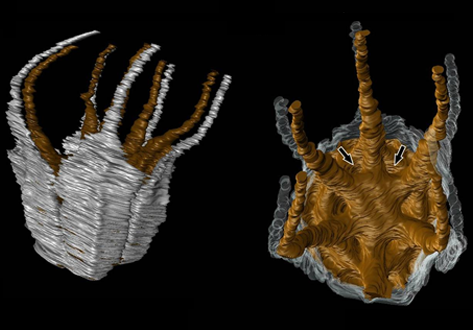
Angiosperm-dominated floras of the Late Cretaceous are essential for understanding the evolutionary, ecological, and geographic radiation of flowering plants.
The Late Cretaceous–early Paleogene Deccan Intertrappean Beds of India contain angiosperm-dominated plant fossil assemblages known from multiple localities in central India. Numerous monocots have been documented from these assemblages, providing a window into an important but poorly understood time in their diversification. On... Read more
Kelly K.S. Matsunaga, Selena Y. Smith, Steven R. Manchester, Dashrath Kapgate, Deepak Ramteke, Amin Garbout, and Herminso Villarraga-Gómez
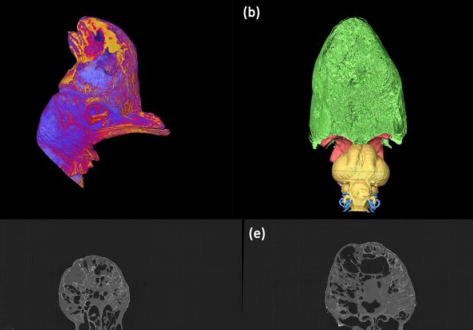
Cranial ornaments such as keratinous horns and bony casques are commonplace amongst birds and take a variety of diverse forms. Possible functions include display, thermoregulation, vocalisation and intraspecific combat, yet few hypotheses have been directly tested. Here we investigate the anatomy and mechanics of the casque of the Southern Cassowary (Casuarius casuarius), and test functional hypotheses using CT-based virtual dissection.
In particular, we determine the nature of pneumat... Read more
Charlotte A. Brassey , Thomas O’Mahoney
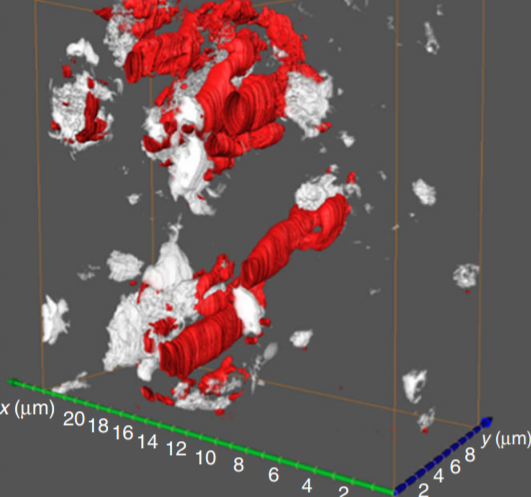
Durable and self-hydrating tungsten carbide-based composite polymer electrolyte membrane fuel cells
Proton conductivity of the polymer electrolyte membranes in fuel cells dictates their performance and requires sufficient water management. Here, we report a simple, scalable method to produce well-dispersed transition metal carbide nanoparticles. We demonstrate that these, when added as an additive to the proton exchange Nafion membrane, provide significant enhancement in power density and durability over 100 hours, surpassing both the baseline Nafion and platinum-containing recast Nafion ... Read more
Weiqing Zheng, Liang Wang, Fei Deng, Stephen A. Giles, Ajay K. Prasad, Suresh G. Advani, Yushan Yan & Dionisios G. Vlachos
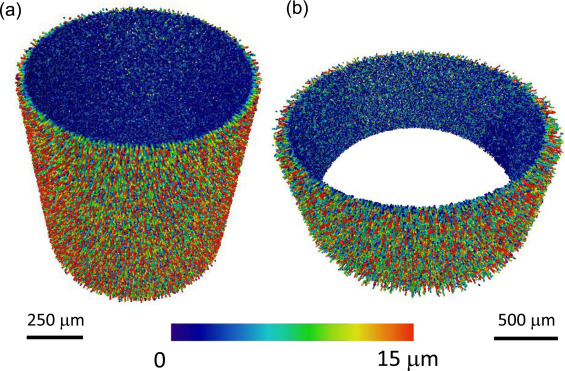
In this study, a series of alumina hollow fibers have been prepared with varied polymer binder (polyethersulfone, PESf) concentration and new polymer-based internal coagulant (aqueous solution of polyvinyl alcohol, PVA). For the first time, the micro-channels were characterized in 3D using X-ray CT to determine micro-channel densities and diameters in the radial direction, as well as the 2D measurement of the pore size in the sponge-like layer.
Read more
Tao Li, Xuekun Lu, Bo Wang, Zhentao Wu, Kang Li, Dan J.L. Brett, Paul R. Shearing
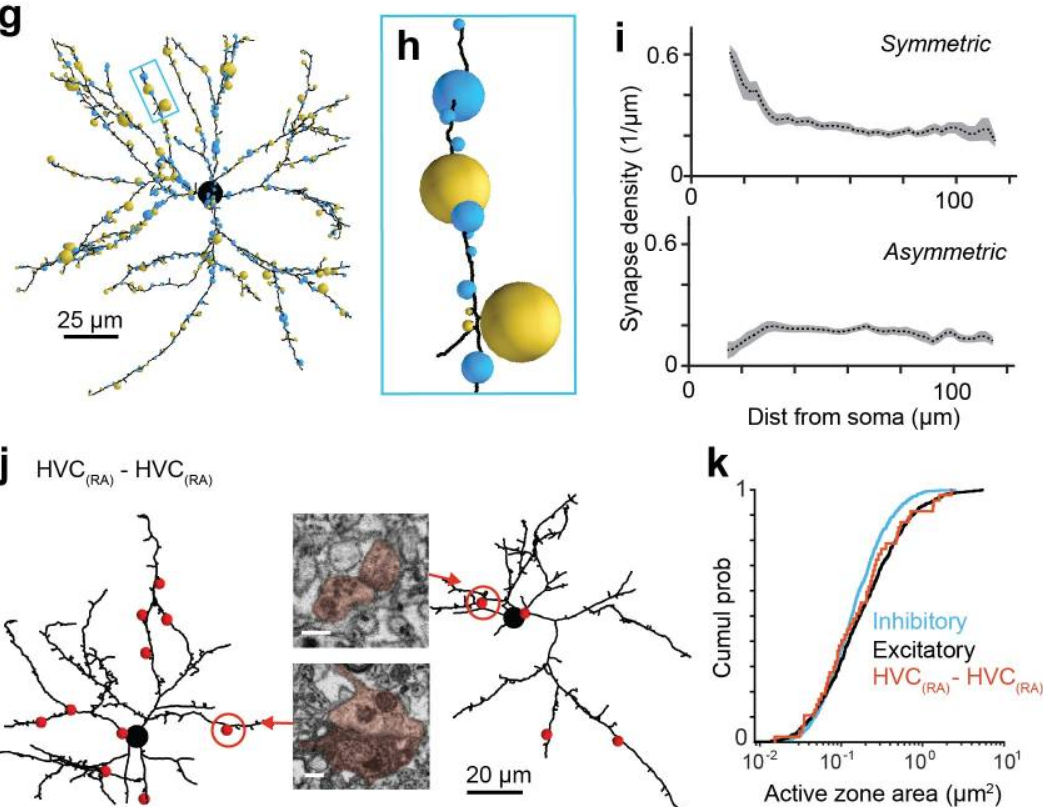
EM connectomics reveals axonal target variation in a sequence-generating network
The sequential activation of neurons has been observed in various areas of the brain, but in no case is the underlying network structure well understood. Here we examined the circuit anatomy of zebra finch HVC, a cortical region that generates sequences underlying the temporal progression of the song. We combined serial block-face electron microscopy with light microscopy to determine the cell types targeted by HVC(RA) neurons, which control song timing. Close to their soma, axons... Read more
Jörgen Kornfeld, Sam E Benezra, Rajeevan T Narayanan, Fabian Svara, Robert Egger, Marcel Oberlaender, Winfried Denk, Michael A Long
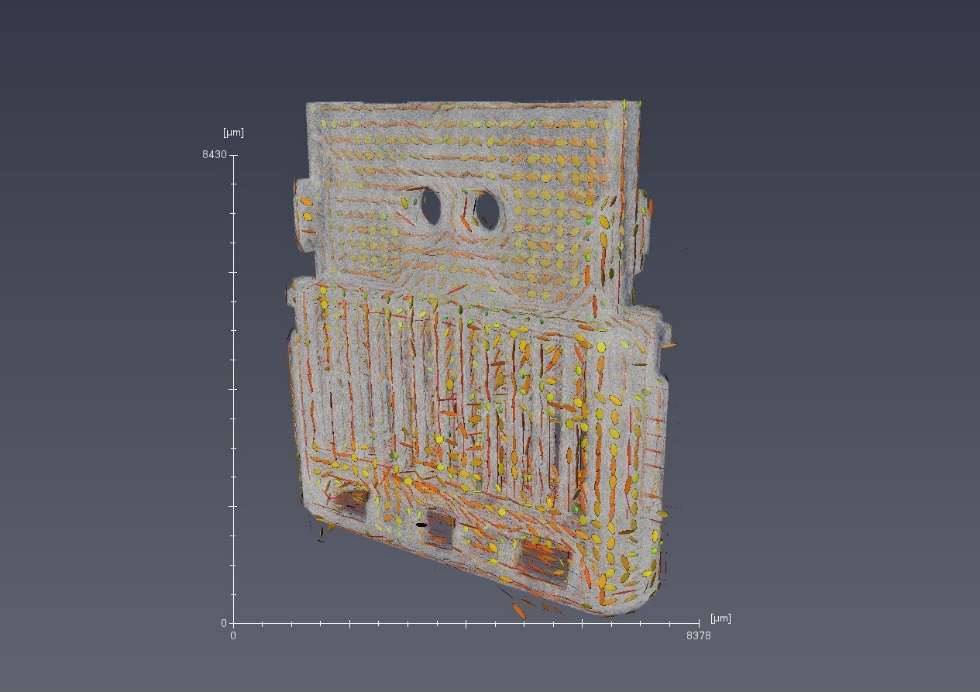
Glass fiber length and orientation analysis of reinforced polymers (GFRP)
Royal DSM is a global science-based company active in health, nutrition and
materials. Within DSM’s Materials Cluster DSM Engineering Plastics is a global player in specialty plastics. These materials are used in components for the electrical and electronics, automotive, flexible food packaging and consumer goods industries.
A typical product made of DSM Engineering Plastics’ polymer portfolio are USB-C connectors. Key performance indicators for this application are dimension... Read more
Jennifer Schillings, Arno Wilbers and Joachim Loos, DSM Materials Science Center, Geleen, The Netherlands
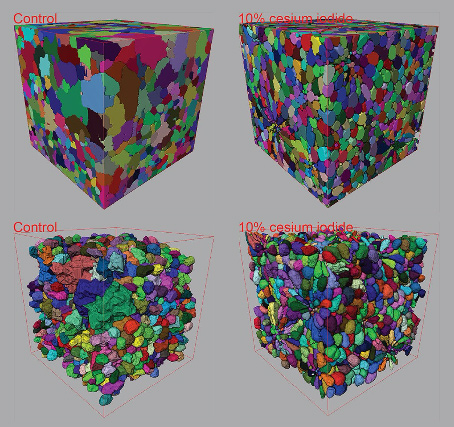
Contrast-enhanced 3D micro-CT of plant tissues using different impregnation techniques
X-ray micro-CT has increasingly been used for 3D imaging of plant structures. At the micrometer reso-lution however, limitations in X-ray contrast often lead to datasets with poor qualitative and quantitative measures, especially within dense cell clusters of plant tissue specimens. The current study developed protocols for delivering a cesium based contrast enhancing solution to varying plant tissue specimens for the purpose of improving 3D tissue structure characterization within plant spec... Read more
Zi Wang, Pieter Verboven and Bart Nicolai, Department of Biosystems KU Leuven – University of Leuven Willem de Croylaan, Leuven Belgium

Volcanogenic Pseudo-Fossils from the ∼3.48 Ga
The ∼3.48 billion-year-old Dresser Formation, Pilbara Craton, Western Australia, is a key geological unit for the study of Earth’s earliest life and the habitats it occupied. Here, we describe a new suite of spheroidal to lenticular microstructures that morphologically resemble some previously reported Archean microfossils. Correlative microscopy shows that these objects have a size distribution, wall ultrastructure, and chemistry that are incompatible with a microfossil origin and in... Read more
Wacey David , Noffke Nora , Saunders Martin , Guagliardo Paul , and Pyle David M

Prepared core technology illustrates in-depth planning and the presence of a mental template during the core reduction process. This technology is, therefore, a significant indicator in studying the evolution of abstract thought and the cognitive abilities of hominids. Here, we report on Victoria West cores excavated from the Canteen Kopje site in central South Africa, with a preliminary age estimate of approximately 1 Ma (million years ago) for these cores. Technological analysis shows tha... Read more
Hao Li, Kathleen Kuman, Matt G. Lotter, George M. Leader, Ryan J. Gibbon
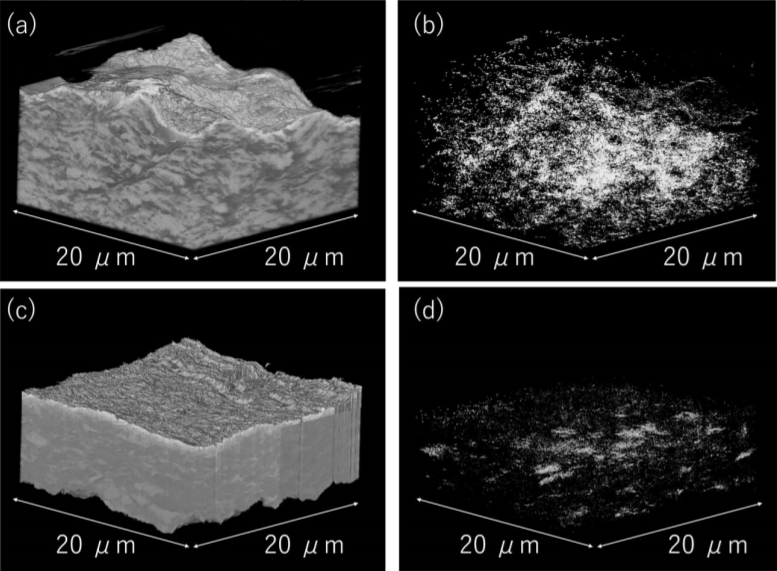
We had proposed an image-processing scheme using union operation suitable for extracting target features with hierarchical dimensions from the original data, and applied it to void analysis in a composite electrode of an all-solid-state lithium ion battery (LIB). Void analysis is very important in developing better composite electrodes for all-solid-state LIBs because internal voids should increase the interfacial resistance. Film formation of electrode-solid electrolyte composites by the aer... Read more
Yuta Yamamoto , Yasutoshi Iriyama, and Shunsuke Muto
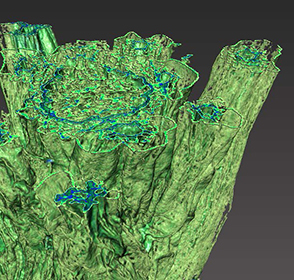
Unilever uses Avizo software to visualize and understand food and detergent structures
Food and detergent products are composed of complex micro structures. With modern microscopic techniques we can make them visible. The microstructure greatly affects macroscopic properties such as appearance, taste, mouth feel and solubility. Making these structures visible and quantifying them is essential to the development of products with optimal product properties. A broad range of imaging techniques is used to visualize microstructure elements at different length scales. For example, X-... Read more
Gerard van Dalen, Unilever R&D Vlaardingen (The Netherlands)
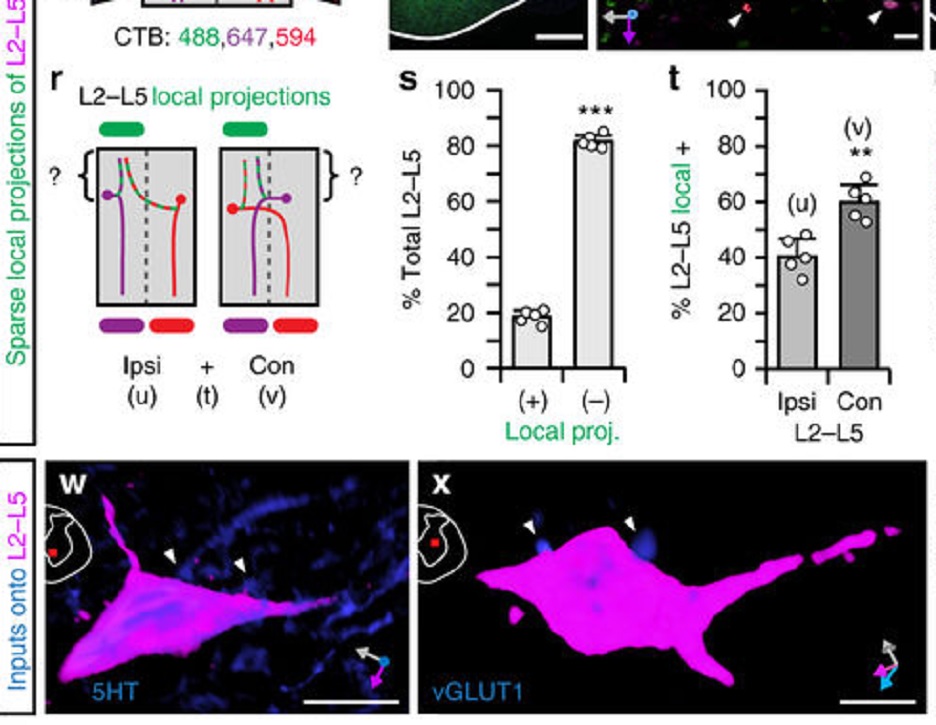
Neural circuitry in the lumbar spinal cord governs two principal features of locomotion, rhythm and pattern, which reflect intra- and interlimb movement. These features are functionally organized into a hierarchy that precisely controls stepping in a stereotypic, speed-dependent fashion. Here, we show that a specific component of the locomotor pattern can be independently manipulated…
Read more
Amanda M. Pocratsky, Darlene A. Burke, Johnny R. Morehouse, Jason E. Beare, Amberly S. Riegler, Pantelis Tsoulfas, Gregory J. R. States, Scott R. Whittemore & David S. K. Magnuson
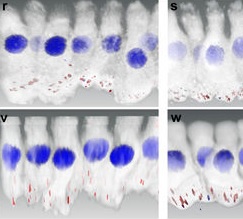
Noise induced hearing loss (NIHL) is a disease that affects millions of Americans. Identifying genetic pathways that influence recovery from noise exposure is an important step forward in understanding NIHL. The transcription factor Foxo3 integrates the cellular response to oxidative stress and plays a role in extending lifespan in many organisms, including humans. Here we show that Foxo3 is required for auditory function after noise exposure in a mouse model system, measured by ABR…Read more
Felicia Gilels, Stephen T. Paquette, Holly J. Beaulac, Anwen Bullen & Patricia M. White
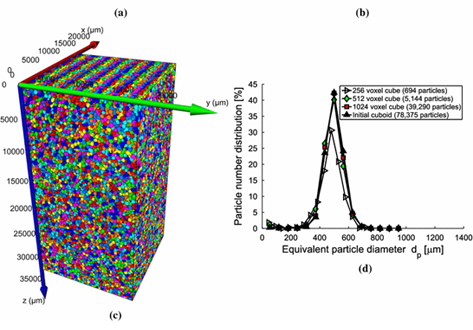
Hydraulic properties of porous sintered glass bead systems
In this paper, porous sintered glass bead packings are studied, using X-ray Computed Tomography (XRCT) images at 16μm16μm voxel resolution, to obtain not only the porosity field, but also other properties like particle sizes, pore throats and the permeability. The influence of the sintering procedure and the original particle size distributions on the microstructure, and thus on the hydraulic properties, is analyzed in detail. The XRCT data are visualized and studied by advanced image fil... Read more
University of Twente, Enschede | Ruhr-University Bochum; Eindhoven University of Technology | Helmholtz Institute Erlangen-Nürnberg for Renewable Energy | University of Stuttgart
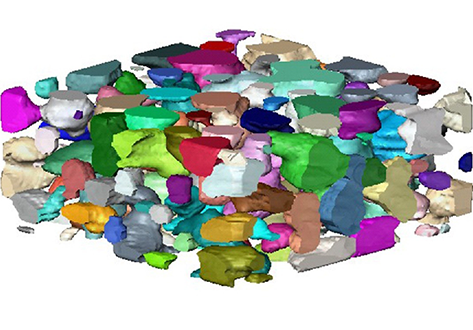
Physical characteristics critical to chromatography including geometric porosity and tortuosity within the packed column were analysed based upon three dimensional reconstructions of bed structure in-situ. Image acquisition was performed using two X-ray computed tomography systems, with optimisation of column imaging performed for each sample in order to produce three dimensional representations of packed beds at 3 μm resolution.
Read more
Department of Biochemical Engineering, University College London | Pall Life Sciences, Portsmouth | Electrochemical Innovation Lab, Department of Chemical Engineering, University College London
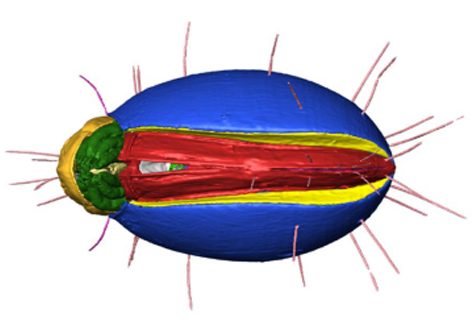
The NOVA project: maximizing beam time efficiency through synergistic analyses of SRµCT data
Beamtime and resulting SRμCT data are a valuable resource for researchers of a broad scientific community in life sciences. Most research groups, however, are only interested in a specific organ and use only a fraction of their data. The rest of the data usually remains untapped. By using a new collaborative approach, the NOVA project (Network for Online Visualization and synergistic Analysis of tomographic data) aims to demonstrate, that more efficient use of the valuable beam time is possi... Read more
The international society for optics and photonics (SPIE)
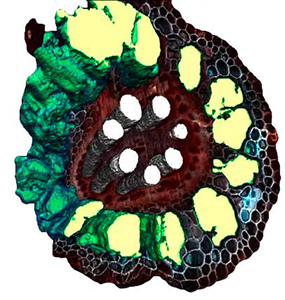
L4iS uses Avizo software to analyze 3D images from laser ablation tomography
Lasers for Innovative Solutions, LLC (L4iS) is developing a new class of tomography technology with the aim of allowing material characterization in three dimensions with sub-micron resolution. The method uses a nanosecond, Q-switched, pulsed ultraviolet laser coupled with high-resolution imaging to generate highly detailed specimen models. Using this system, sequential images similar to light-sheet fluorescence microscopy are used to digitally reconstruct the specimen.
Read more
Brian Reinhardt and Benjamin Hall, L4iS (USA)
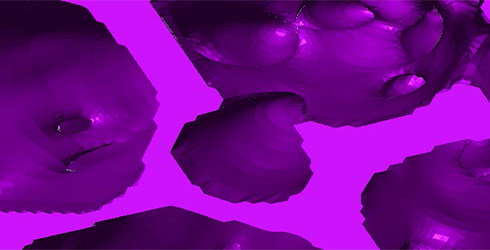
FAMU uses Avizo software to visualize and understand heat transfer and fluid flow
The CHEFF (Computational Heat Fluid Flow) Research group at Florida Agricultural & Mechanical University is using computational fluid dynamics to model flow and heat transfer in various engineering applications for industry, government and the private sector. The primary goal of this research is to first examine and then enhance the thermal performance of current and future low-density reticulated porous media, and explore their use as heat sinks in high power electronics (computer chips... Read more
CHEFF Research Group at Florida Agricultural & Mechanical University: Dr. G.D. Wesson, Professor of Chemical Engineering/Biological Agricultural Systems Engineering, Shawn Austin (Graduate student), Shari Briggs (Graduate student), Mellissa McCole (Graduate student), David Mosley (Graduate student)
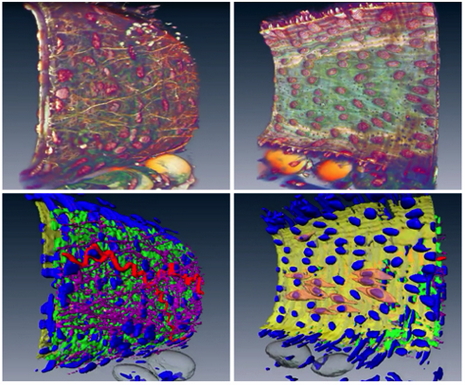
University of Glasgow uses Amira software to analyze vascular structures
The vascular (arterial or venous) wall is a fascinating structure. At the simplest level, we can think of the wall as being composed of three distinct, but interacting, layers . The vascular wall changes its structure in conditions such as hypertension which can cause a thickening of the wall. Unfortunately, the details of this ‘remodeling’ process are poorly understood.
Therefore, studying the 3D architecture may provide vital clues for future therapeutic targets.
R... Read more
Dr. Craig J Daly, School of Life Sciences, College of Medical Veterinary & Life Sciences, University of Glasgow
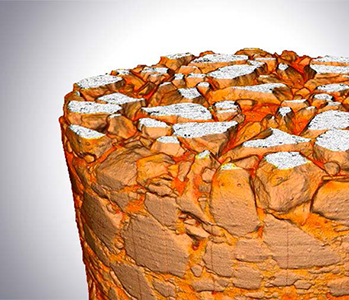
The Division of Highway and Railway Engineering, Royal Institute of Technology (KTH) promotes advances in computational and experimental science in order to develop new materials, tools and systems for improved mobility, transportation safety and infrastructure durability. The group works on analysis and performance-based design of roads and tracks, management as well as operation and maintenance of roads.
Read more
Denis Jelagin, Alvaro Guarin, Ibrahim Onifade, Nicole Kringos, and Bjorn Birgisson (KTH)